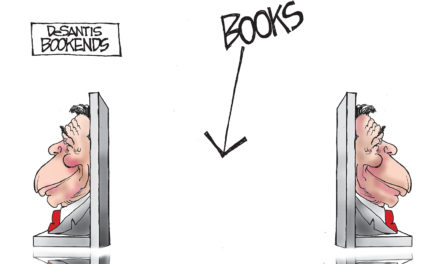Memphians regularly don’t recognize what is distinctive about us and what we are doing right unless we get outside validation.
We should be getting that validation today in spades. Our own Ballet Memphis is featured prominently and positively today in the New York Times and Washington Post. It was validation enough that our ballet company was asked to perform in the Kennedy Center Opera House in Washington, D.C., as part of the Ballet Across America season, but the rave reviews underlined it.
Ballet Memphis is a gem that we take too little time to celebrate, much less support. It’s like so many of our assets, notably our musical riches. Despite our rhetoric about our musical heritage, we still grudgingly shortchange our professional musicians with the financial support they deserve. Despite our rhetoric about the importance of creativity, we fund Ballet Memphis at levels lower than it deserves, considering that it’s the organization that regularly gets the spotlight shone on our city while better funded arts group respond with the predictable and the mundane.
Peak Experiences
It would be easier – if not understandable – if Ballet Memphis did the same. It would require less work, less imagination and less commitment to Memphis. Instead, its ballet series based on Memphis themes has illuminated our understanding of ourselves and the character of our city while rising to a level of excellence that puts it at the top of our peak art experiences.
If there were any doubts about this (hopefully it will send a reminder to local arts supporters about rewarding its éclat), they were put to rest with the news coverage by the country’s two best newspapers.
Reviewing Ballet Memphis’ In Dreams, choreographed by the remarkable Trey McIntyre to the music of Roy Orbison, the Washington Post wrote:
“Particularly now, Memphians are living the ragged emotions to which Orbison gave voice. Ballet may be an art of refinement and privilege, but it exists in the everyday, and one can’t help but make connections between stage and reality. For me, the connection between ‘In Dreams’ and life fused into a single line of understanding — Tennessee, struggling in the recession; the deep South, devastated by the BP disaster in the gulf. The ache and darkness Ballet Memphis put onstage was more than a dance, it was an echo of human experience.”
Dreamy Dancing
Describing the ballet, the newspaper said: “McIntyre distorts ballet steps for emotional effect, substituting broken angles and flat feet where you expect long lines, but he preserves a silky, stylized elegance, even in the sudden collapses and shudders. There was an especially poignant duet to ‘Crying,’ danced by Steven McMahon and Jane Rehm, where falling backward was the silent response to Orbison’s anguish. Rehm melts into McMahon’s arms as if her bones had dissolved; later, when McMahon throws himself backward into empty space, it’s as if an undertow has seized him.”
If that wasn’t enough of a rave review, the New York Times added this:
“In solos, duets and trios, different images of need emerge; but even though the duets are intense, it’s as if they’re happening in the traumatized unconscious. ‘In Dreams’ — which I imagine would make more impact in a smaller theater — is distinctive, touching, and ambiguous.”
As for Mr. McIntyre’s ballet, the newspaper wrote: “Part of the interest of Mr. McIntyre’s work is that it catches fragments of that heartbreak while never trying to illustrate the songs’ words literally. The lyrics say one thing, the dance says another, but they stay in close connection both in mood and in details of phrasing. And so he negotiates the difficulty of choreographing to music so generally appealing that it might easily overwhelm most dances.”
Bragging Rights
All of this is especially satisfying because of its endorsement to the unrelenting creative force propelling the ballet for 24 years, its founder Dorothy Gunther Pugh. It was a bold decision to form the troupe — which began with two dancers and has expanded to its present 19-dancer company — in a region known for its poor support for the cultural arts. That said, Mrs. Pugh’s idea has not only survived; along the way, she set a level of artistic creativity unseen anywhere else in Memphis.
That’s not to mention that she also happens to be the most articulate interpreter of the arts in Memphis, whether on the dance floor or in her commentaries about the role of arts and culture in creating great cities. We were reminded of her expressive verbal gift when she was quoted about Roy Orbison: “Calling him ‘the Plácido Domingo of country music,’ she likened his singing to ‘the sound of the human heart breaking.’”
Like so much that is right about Memphis, the remarkable track record of Ballet Memphis is often taken for granted, overlooked and underappreciated. Hopefully, taking up residence at Playhouse on the Square will anchor it in a way that improves things in tangible ways, say, attendance and ArtsMemphis funding.
At a time when we are bragging about two plays on Broadway, we think a target closer to home deserves it even more. Let’s all let them know it.





Excellent Summary! I saw the send-off performance and it was truly fantastic. The praise from DC was more than earned.